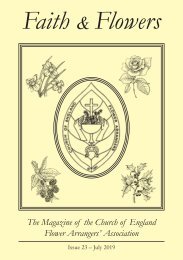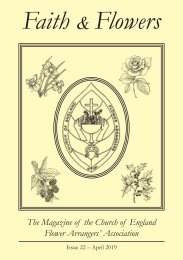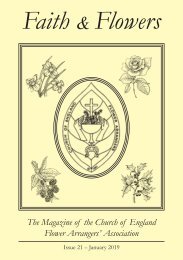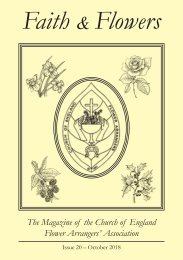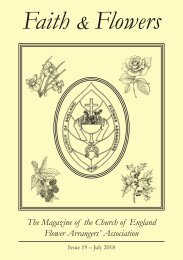Apr_2016
Create successful ePaper yourself
Turn your PDF publications into a flip-book with our unique Google optimized e-Paper software.
Growing in North Yorkshire<br />
means I can only<br />
realistically grow flowers to<br />
cut from late March to<br />
October. More southerly<br />
parts of the country produce<br />
flowers over the winter<br />
months, most notably the<br />
gloriously scented narcissus<br />
and daffodils from the Scilly<br />
Isles, available throughout<br />
January and February.<br />
The flowers I grow range from bulbs, annuals, biennials to perennials.<br />
The picking year starts with the bulbs, daffodils first, I love to mix the<br />
varieties together so they are not all plain yellow. Anemones, ranunculus<br />
and tulips follow on, wonderful blowsy double tulips open like peonies<br />
and last for ages. The bulbs are soon joined by biennials – hesperis or<br />
sweet rocket has a lovely airy appearance and grows tall, honesty,<br />
wallflower and sweet william, the old fashioned flower that everyone<br />
delights in seeing again. The bulbs are completed with bluebells and the<br />
majestic alliums.<br />
From late May through June the perennials shine – aquilegia,<br />
campanula, peonies, delphiniums, many kinds of daisy, phlox, veronica,<br />
salvia, and the wonderful acid green of alchemilla mollis, but the list is<br />
endless.<br />
As we move into full summer along come the annuals – cornflower,<br />
nigella, cosmos, scabious, antirrhinums etc. etc. Ammi major is a great<br />
alternative to gypsophila, not unlike cow parsley but without the smell,<br />
very popular for weddings. To this heady mix we add the dahlias and<br />
the colour rainbow is full until at least mid October but sparing a frost,<br />
it can be much later.<br />
14












